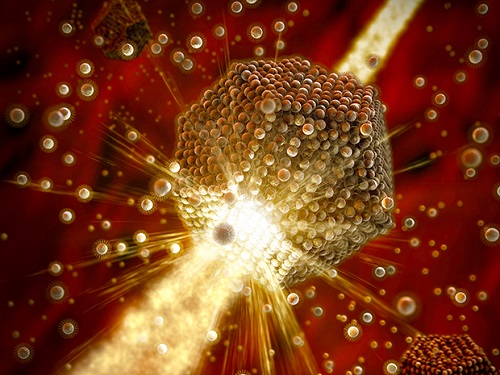创新背景
光电技术主要用于成像和光源,应用领域十分广泛。其组成元件半导体芯片与光电探测器性能息息相关。半导体芯片是在硅半导体集成电路制作所用的硅晶片顶部生长半导体薄膜来制造的,其方式是使薄膜与基片晶圆的晶体结构一致。但薄膜难以转移到其他基底材料上,限制了半导体芯片的制造工艺。
创新过程
美国宾夕法尼亚州电气和系统工程系助理教授DeepJariwala领导博士研究员和PawanKumar和博士生JasonLynch链和其他研究机构人员组成团队研究制造原子级薄的超晶格或半导体薄膜的新方法,研究论文发表在《自然-纳米技术》。

团队制作出一个WS2的超级晶格,有5个原子厚。晶格是晶体内部原子排列的具体形式,1个原子厚的材料采取晶格或由几何排列的原子层形式。超晶格由不同材料的晶格相互堆叠而成的,具有全新的光学、化学和物理特性,可以适应光敏元件和其他传感器等特定应用。传统的超晶格是直接在所需的基底上生长的,它们往往有数百万个原子的厚度,而且很难转移到其他材料基底上。
研究人员通过使用模拟进行了两年研究,探索出超晶格将如何与环境互动之后,通过实验来构建超晶格。在两英寸的晶圆上生长晶格,然后溶解基底,确保晶格可以转移到其他需要的材料上。此外,用原子的重复单元在一个方向上排列创建晶格,使超晶格二维、紧凑和高效。
研究过程中团队确保所研究原子薄超晶格的生长是可扩展的,可适用于许多不同的材料。可扩展性的厚度均匀的超晶格保证制作过程简单和可重复性,这对超晶格能放在行业标准的四英寸芯片上非常重要。

这种超晶格厚度均匀且又薄又轻,成本低,还可以发射光,具有高度的光辐射性。研究人员表示,超晶格使用一种涉及激子-极子的新型结构,这是一种由一半物质和一半光组成的准态粒子。光是很难控制的,但物质是可控的。通过操纵超晶格的物质状态,可以间接控制它发出的光。
创新关键点
采用原子结构排列创造超薄晶格,改进半导体芯片在光电技术中的使用效率。
创新价值
超晶格有望成为一个光源,大大改善光电技术的使用效率。
Atomic-scale ultra-thin materials are expected to increase the use of optoelectronic technology
DeepJariwala, assistant professor in the Department of Electrical and Systems Engineering at Penn State, USA, led a team led by Ph.D. researcher Pawan Kumar and Ph.D. student Jason Lynch Chain and other researchers to investigate new methods of making atomically thin superlattices, or semiconductor films, published in Nature -nanotechnology".
The team produced a superlattice of WS2 that is five atoms thick. A lattice is a specific form of arrangement of atoms inside a crystal, and materials one atom thick take the form of a lattice or a geometrically arranged atomic layer. Superlattices, made up of lattices of different materials stacked on top of each other, have entirely new optical, chemical and physical properties that can be adapted for specific applications such as photosensors and other sensors. Conventional superlattices are grown directly on the desired substrate, they are often millions of atoms thick, and are difficult to transfer to other material substrates.
The researchers built the superlattice experimentally after two years of research using simulations to explore how the superlattice would interact with its environment. The lattice is grown on a two-inch wafer, then the substrate is dissolved, ensuring that the lattice can be transferred to other desired materials. Furthermore, creating lattices with repeating units of atoms arranged in one direction makes superlattices two-dimensional, compact and efficient.
During the research, the team ensured that the growth of the investigated atomically thin superlattices is scalable and applicable to many different materials. Scalability The uniform thickness of the superlattice ensures a simple and repeatable fabrication process, which is important for the superlattice to fit on an industry-standard four-inch chip.
The superlattice has a uniform thickness, is thin and light, has a low cost, and can emit light with a high degree of light radiation. The researchers say the superlattice uses a novel structure involving excitons-poles, quasi-state particles that are half matter and half light. Light is difficult to control, but matter is controllable. By manipulating the state of matter of a superlattice, the light it emits can be indirectly controlled. This means that this superlattice can be a light source. This technology has the potential to greatly improve the efficiency of the use of optoelectronic technology.
智能推荐
新材料 | 利用新型框架可控制材料中的无序结构
2022-10-11加州理工学院的研究人员开发了一个框架来设计新材料,通过模仿隐藏在自然生长模式中的基本规则,可以创建具有特定可编程特性的设计材料。
涉及学科涉及领域研究方向新材料 | 将新型电介质组件应用于微型晶体管可大幅提升电子元件性能
2022-09-23来自新南威尔士大学悉尼分校的研究人员开发了一种微小,透明和灵活的材料,可用作晶体管中的新型电介质(绝缘体)组件。这种新材料将使传统的硅半导体电子产品无法做到的事情成为可能——在不影响其功能的情况下变得更小。
涉及学科涉及领域研究方向新材料 | 不可逆聚合物提高二维聚合物性能,推动材料学发展
2022-06-29利用单体分子特性组成不可逆聚合物,提高二维聚合物的稳定性。
涉及学科涉及领域研究方向新材料 | “海盐织物”自充电设备通过收集空气中的水分来发电
2022-09-22研究创新使用海燕和织物制成超薄自充电设备,并在设备上区分出独特的干湿对称结构,保持设备的含水量,在分离海盐离子时通过吸收空气中的水分产生电力,提高设备的电气性能。
涉及学科涉及领域研究方向